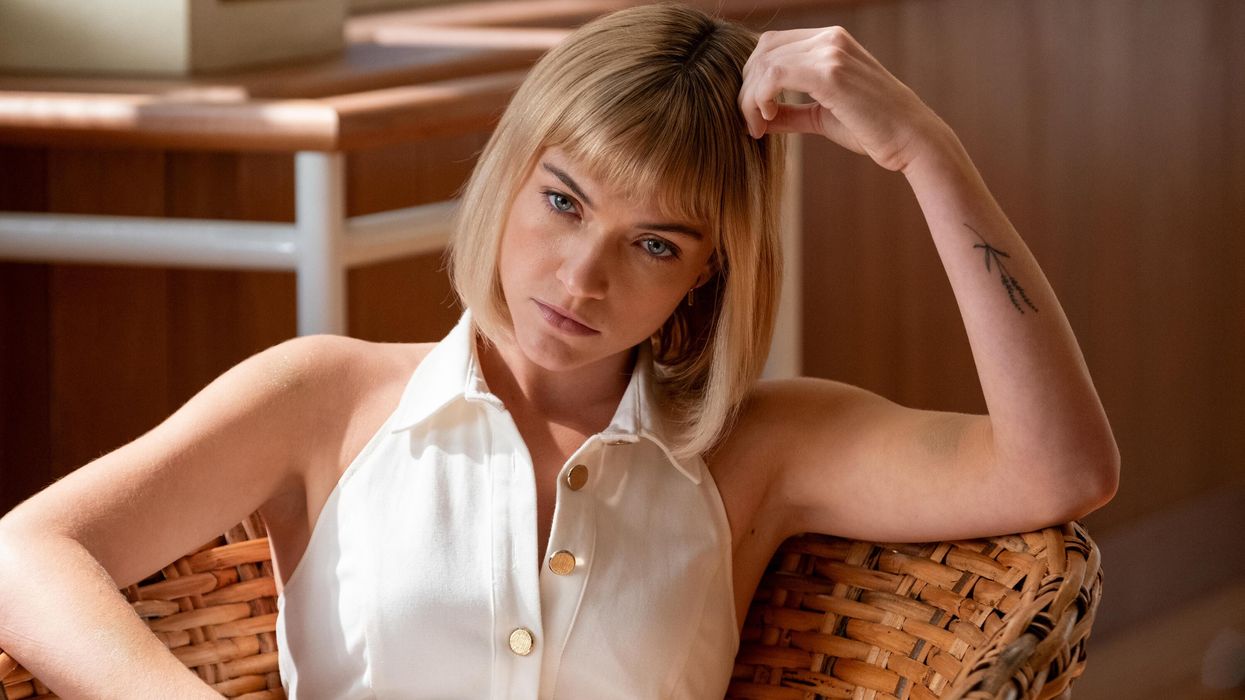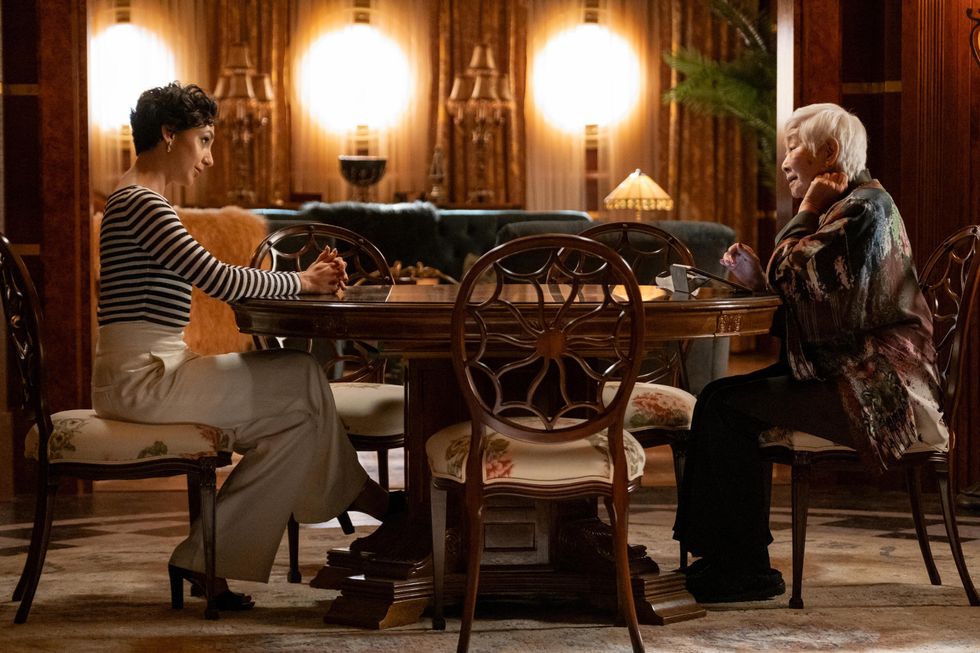Written by Franzis Müller
When it comes to editing, the process is often likened to assembling an intricate jigsaw puzzle with thousands of pieces. The task can be daunting as you sit at a table surrounded by an array of differently shaped and edged pieces, each waiting to challenge your problem-solving skills. You begin the journey with a sense of excitement, eager to see the final picture come to life.
However, as you work through the puzzle, you may face obstacles and challenges that test your patience and perseverance. But with persistence and a willingness to experiment and try different combinations, you eventually reveal the final image, feeling a sense of satisfaction and accomplishment.
This analogy is particularly fitting for a series centered around solving a murder, where the protagonists gather clues and piece together evidence to uncover the truth behind the crime.
Death And Other Details is a thrilling series created by Heidi McAdams and Mike Weiss. The story revolves around Detective Rufus Cotesworth and his protege Imogene Scott, who are investigating the truth on a cruise liner where everyone seems to be hiding something.
The series is full of twists and turns that keep the audience on the edge of their seats, making it an exciting challenge throughout the editing process. Not only do we have a vast array of characters to navigate, each with their secrets and demons, but we are also in a race against time to uncover not just one but possibly two murders.

In episode three, written by Nick Bragg and directed by Alrick Riley, Rufus and Imogene's investigation is suddenly interrupted when Detective Heldi Eriksen from Interpol arrives to investigate. Let me take a moment to break down some of my favorite scenes from this episode.
Ahead of receiving dailies, I create a script board to navigate the footage better. I assign a color for each character; then, on note cards, I add a brief scene description, plus keywords to indicate the character's emotional state. For this show, I assigned the color yellow to Imogene, so I used yellow note cards for scenes centered around her. When she was working with Rufus, they were orange, and so on. This board serves as a reminder of the show's structure and the direction we aim to take the characters.
After that, I focus on the soundscape I wish to utilize within the episode. In this show, we are confined to a cruise liner sailing the Mediterranean. As I have not personally been on a cruise before, I relied on research to create the ship's atmosphere and inject life into these set pieces through sound.
My assistant editor, Michelle Felner, and I worked on the mix for various rooms and adjusted the sounds of waves crashing, wind blowing, boat creaks, etc, during the editing process. This approach enables me to start on the right track before further development in sound design. By preparing beforehand, I can free up space to experiment with the material without stress. While things may change during the process, having a structure and tools available is always helpful.
We Meet Eriksen, and The Race Is On.
The ticking sound of a pocket watch and a close-up of Veblen's The Theory Of The Leisure Class introduces Detective Hilde Eriksen in episode three. At 9 am sharp, her work begins. She's here to gather the facts and get to the bottom of the victim's cause of death. On the other hand, Rufus is more emotional when we see him again. After all, his friend and colleague rested in the body bag.
I tried to differentiate these two characters using the pace of their interaction. Eriksen is sharp and to the point, almost overlapping Rufus. Rufus, however, takes his time to respond. I kept them in the same frame using OTS shots until Eriksen found a crack in Rufus's facade, then switched to singles. I chose to save the close-up shots for the moment when the relationship between the two characters shifts. Eriksen's questions are no longer about Keith's death; instead, they are focused on Rufus. I want the audience to see that she has discovered a flaw in Rufus in a short amount of time. She is a worthy opponent and could create obstacles in Rufus's investigation. Although we could have played the whole scene in close-ups, going against that maintains a rhythm and avoids monotony. This scene raises the stakes in Rufus and Imogene's investigation. Could Eriksen suspect Imogene? After all, the missing security footage shows Imogene leaving Keith's room.
Jules Is A Suspect
In this scene, Eriksen and Rufus interrogate Jules and Teddy in the surveillance room. Eriksen is new to our audience; we have spent little time with her compared to the rest of the guests in the past two episodes. Therefore, I believe Rufus acts as our anchor in this scene. He shares the frame with Eriksen most of the time, and we only jump into his close-ups when the questions/answers solve his inquiry. This helps the audience pay attention to the details of his investigation.
Eriksen and Jules are at odds in this scene. Again, Eriksen takes control, so her answers are precise and almost overlapping with Jules's response. But he's not backing down, so the pace slowly escalates until we reach the release brought by Eriksen's pocket watch.
When shaping the scenes, I prefer cutting with the sound off. This allows me to focus on the actor's body language first. Then, I switch the video off and focus on the audio. Linda Emond, who portrays Eriksen, speaks her lines with a delightful cadence, so I wanted to take advantage of her pace. The same goes for Mandy's delivery. As she interrogates Jules and Teddy, she is playing a cat-and-mouse game with them, so I wanted to focus solely on her cadence and explore where I could add or remove air from her delivery without relying on visual cues. The tempo of the line delivery helps me build the rhythm of the scene. It may seem like many steps on paper, but it allows me to take a step back and look at scenes from a different perspective, pushing me to explore other options.
Death and Other Details | Trailer | Huluwww.youtube.com
"How Many Clues Have Passed You By"
When we think the tide may be turning in Rufus and Imogene's favor, more secrets are uncovered. What are the Colliers trying to hide, and more importantly, how does it all connect to the murder of Imogene's mother? In this scene, Rufus helps Imogene get back to reality. Imogene has been trying to connect all the new pieces of information to her mother's murder and has been so focused on it that she may have missed the bigger picture and the real killer.
This scene reminds me of the importance of collaboration between creatives. Much of our work involves interpreting the script as well as the director and the showrunner's vision. I worked with Mike and Heidi to create different variations of this scene before we arrived at the final edit.
We had the benefit of being gifted a variety of performances from Mandy and Violett, which allowed us to experiment with our approach and capture the turning point in Imogene and Rufus' relationship. It was a balancing act between the characters' vulnerability and helping the audience sympathize with them. It was also an exercise in learning to take a step back and view the scene from a different perspective.
By adding a flashback of all our suspects towards the end of the scene, we not only remind Imogene of the goal but also bring the audience's attention back to the bigger picture. What have you missed? When everyone on the cruise has something to hide, details matter.
Thank you for taking the time to read this and let me share my thoughts on my editing process. If you are a fan of murder mysteries, you should check out
Death And Other Details On Hulu!













